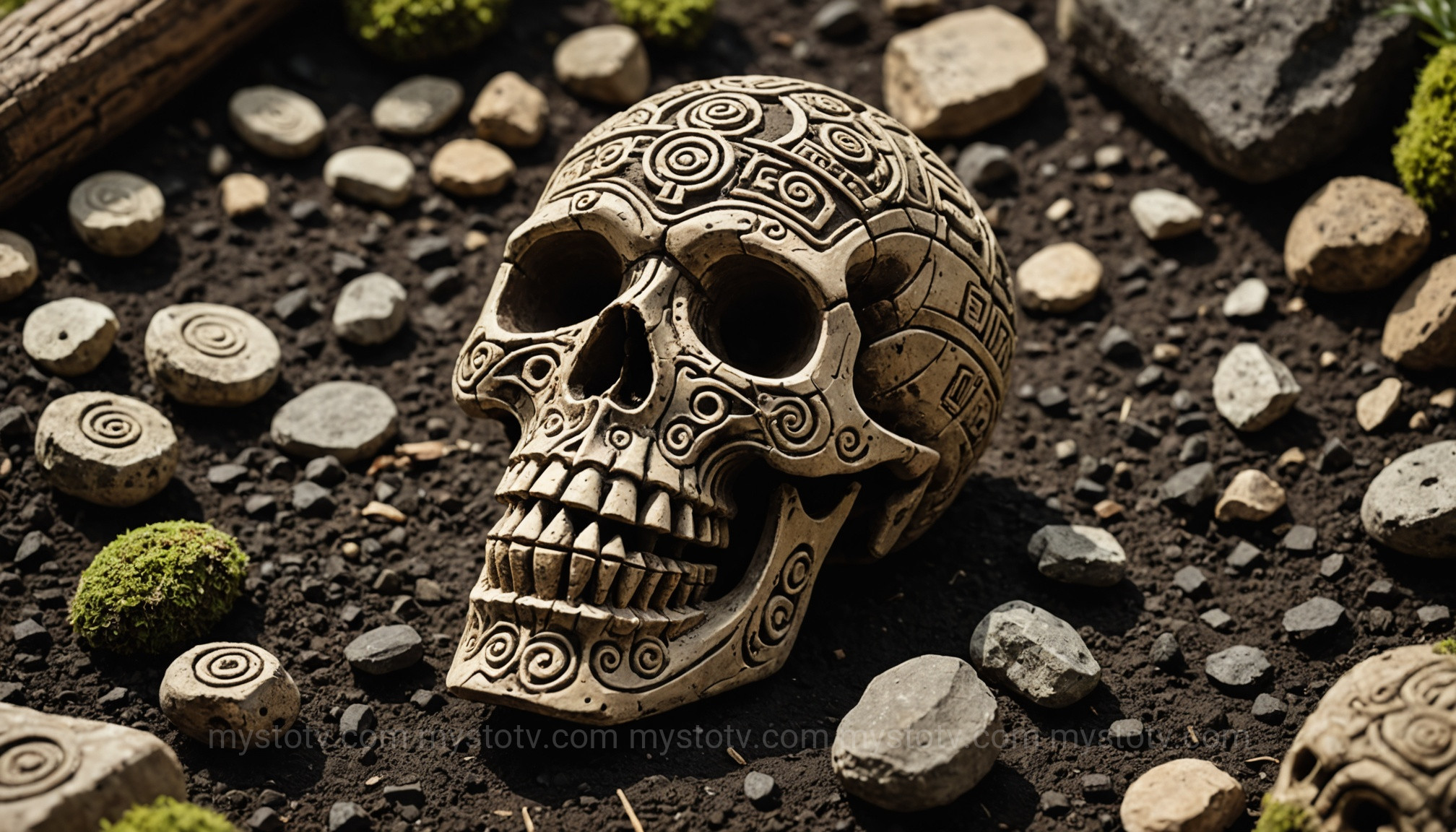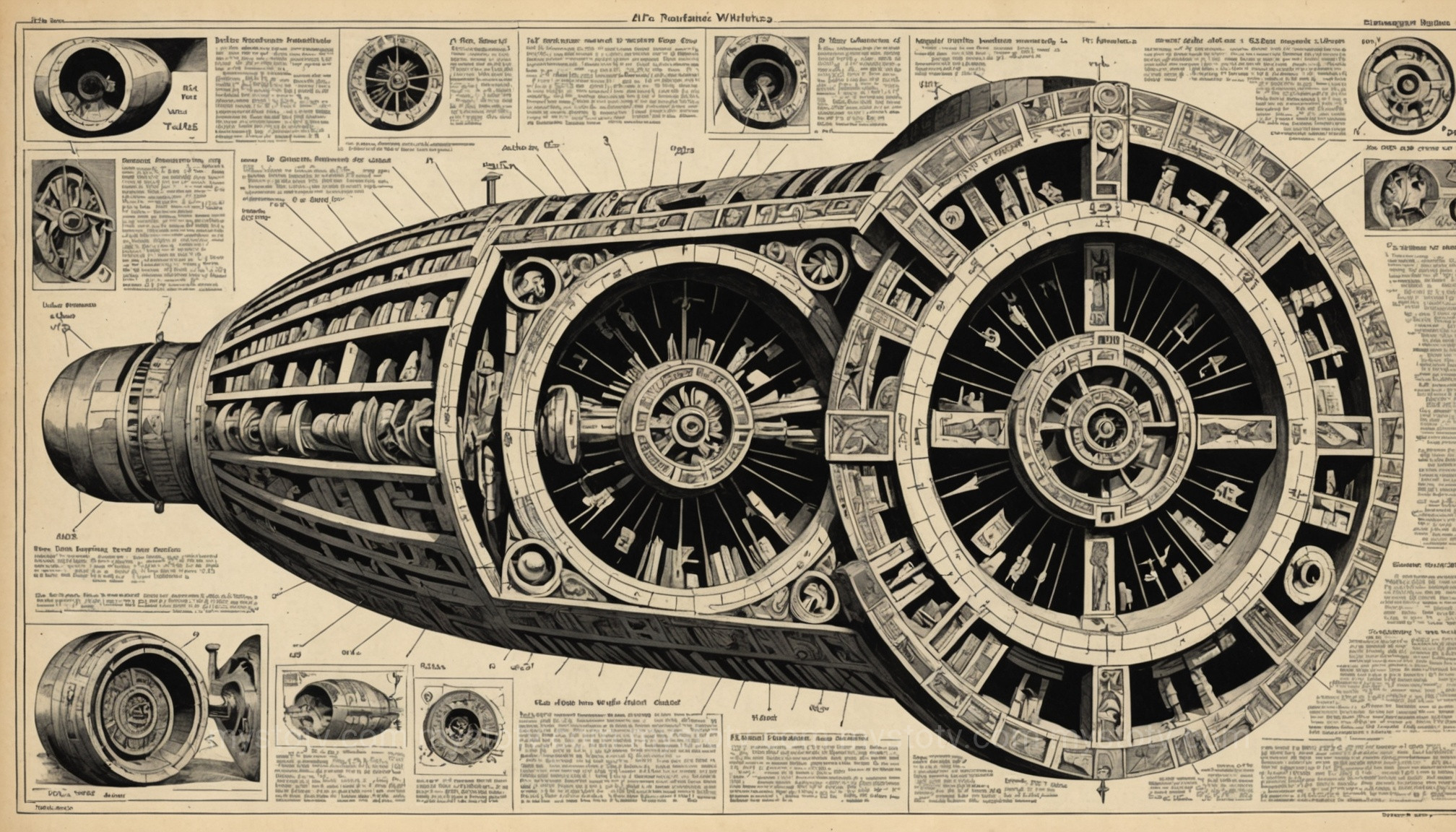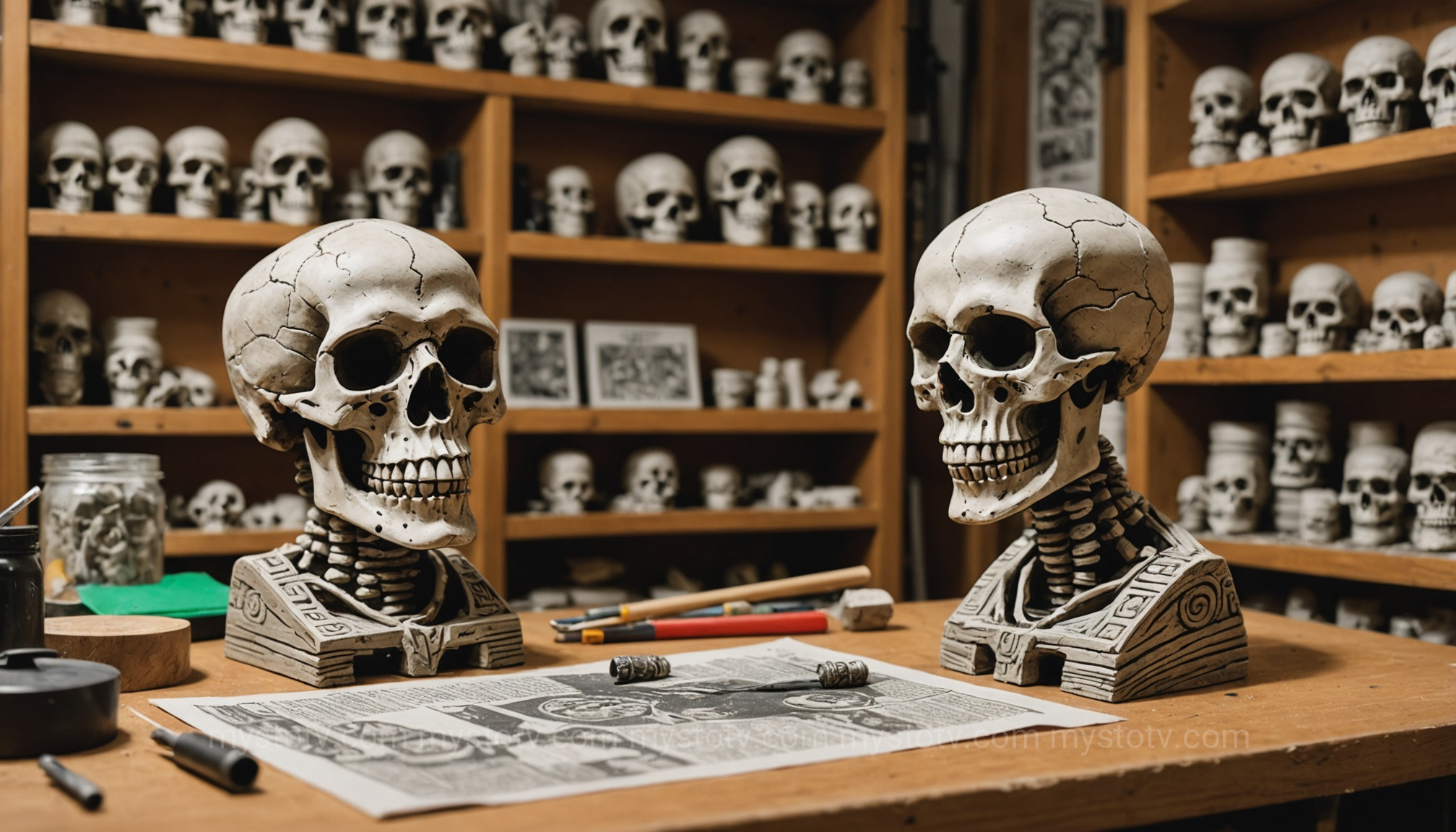I still remember the first time I heard it. I was scrolling through a late-night video feed, half-attentive, when a sound erupted from my speakers that made every hair on my arms stand on end. It wasn't just loud or jarring; it was primal. It sounded like a soul-shattering human scream, a chorus of agony that felt both ancient and deeply unsettling. For a moment, I thought it was a sound effect from a horror film. But the video’s title claimed something far more fascinating and chilling: this was the authentic sound of an Aztec death whistle. That initial, visceral reaction sent me down a rabbit hole of history and science, trying to understand how and why an ancient civilization would create an instrument of pure terror. The story of the Aztec death whistle is more than just a scary sound; it’s a window into a world of ritual, warfare, and sophisticated acoustic engineering.
Contents
- 1 The Archaeological Discovery and History of the Aztec Death Whistle
- 2 The Science Behind the Horrifying Sound of the Aztec Death Whistle
- 3 Modern Recreations and Demonstrations of the Aztec Death Whistle
- 4 The Cultural and Psychological Impact of the Aztec Death Whistle
- 5 Frequently Asked Questions about the Aztec Death Whistle
- 6 References
- 7 Conclusion
The Archaeological Discovery and History of the Aztec Death Whistle

The story of the artifact we now call the Aztec death whistle begins not with a bang, but with a quiet misinterpretation. For decades, these small, often skull-shaped clay objects, unearthed from Mesoamerican sites, were labeled as mere toys or decorative ornaments by archaeologists. They were cataloged, stored, and largely forgotten in museum archives. This all changed in 1999 during excavations at a temple dedicated to the wind god Ehecatl in Tlatelolco, a part of modern-day Mexico City. Archaeologists uncovered the skeleton of a sacrificed individual, and clutched in its bony fingers was a small, skull-shaped whistle. Even then, its true purpose remained a mystery for over a decade.
It wasn't until around fifteen years later that an archaeologist, out of curiosity, decided to blow into one of these artifacts. The sound that emerged was nothing like a toy. It was the horrifying, shriek-like noise that has since captivated and terrified millions online. This moment of discovery was transformative, forcing a complete re-evaluation of not just the object itself, but of Aztec sound culture. The analysis revealed that this was no simple instrument; it was a sophisticated piece of acoustic technology designed with a very specific, and terrifying, purpose in mind.
Theories on the Original Use of the Aztec Death Whistle
Once its sonic capabilities were understood, the question shifted from "what is it?" to "what was it used for?" While no definitive historical text explicitly describes its function, the archaeological context and the sound itself have led to several compelling theories. Each theory provides a glimpse into the brutal and ritualistic world of the Aztecs.
- Psychological Warfare: This is the most popular and widely cited theory. Imagine hundreds, if not thousands, of Aztec warriors blowing these whistles in unison as they charged into battle. The resulting cacophony would have been a wall of sound mimicking the screams of the dying. For an opposing force, the psychological impact would be devastating, sowing fear and chaos before the first spear was even thrown. The sound of the Aztec death whistle would have served as an omen of the slaughter to come.
- Ritualistic Sacrifice: The whistle's discovery with a sacrificial victim at the temple of Ehecatl, the god of wind, is a crucial clue. Some experts propose the whistle was used during sacrificial ceremonies. It may have been intended to guide the victim's soul to the afterlife or to simulate the scream of the sacrificed, creating a powerful auditory experience for those witnessing the ritual. Ehecatl was also associated with the breath of life, and the whistle could have symbolized the violent expulsion of that life force.
- Funerary Rites and Healing: A less common but plausible theory suggests a role in healing or funerary contexts. In some Mesoamerican beliefs, certain sounds were thought to ward off evil spirits or influence health. The jarring sound of the Aztec death whistle could have been used in rituals to protect the dead on their journey through the underworld, Mictlan, or in shamanic healing practices, though this is more speculative.
The analysis of these theories suggests the Aztec death whistle was likely a multi-purpose tool, its use dependent on the context—be it the battlefield, the temple altar, or the graveside. Its power lay in its ability to tap into a universal human fear response through sound.
The Science Behind the Horrifying Sound of the Aztec Death Whistle

The terrifying efficacy of the Aztec death whistle isn't magic; it's a masterpiece of pre-Columbian acoustic engineering. Modern analysis using tools like spectrum analyzers has revealed the complex science behind its bone-chilling sound. Unlike a simple flute or whistle that produces a melodic tone, this device is specifically designed to create a sound full of noise and chaotic frequencies, a sound profile that our brains are hardwired to interpret as a sign of extreme distress.
Acoustic Design and Frequency Analysis
The secret to the Aztec death whistle lies in its internal structure. When air is blown into the device, it is funneled towards a sharp, angled edge that splits the airstream in two. These two streams are then directed into separate chambers of different shapes and sizes. Inside these chambers, the air collides with itself, creating a vortex and extreme turbulence. This chaotic airflow is what generates the wide range of inharmonic frequencies, rather than a single, clean note.
Sound analysis reveals that the whistle produces frequencies ranging from 200 Hz to over 1,500 Hz, with significant peaks in the 1,000 Hz range. This is critically important because the human ear is most sensitive to frequencies between 1,000 and 4,000 Hz. More importantly, the sound profile closely mimics that of a panicked human scream.
As researcher Arnd Adje Both, an expert in pre-Hispanic music archaeology, has noted, the sound is not musical. Instead, it is a "noise-generating" device. The analysis suggests the Aztecs understood, either through trial and error or sophisticated knowledge, precisely how to manipulate airflow to create a sound that bypasses rational thought and triggers the brain's amygdala—the center for fear and fight-or-flight responses.
Psychoacoustics: Why the Sound is So Disturbing
Psychoacoustics is the study of how humans perceive sound. The sound of the Aztec death whistle is a perfect case study in weaponized psychoacoustics. A human scream has a unique quality called "roughness," which refers to rapid fluctuations in amplitude. Our brains are uniquely attuned to detect this roughness as a signal of alarm. The Aztec death whistle artificially generates this same acoustic roughness.
When you hear it, your brain doesn't process it as music or a simple noise. It processes it as a direct threat. This explains the immediate, visceral reaction most people have—a feeling of unease, dread, or even outright panic. The Aztecs didn't just create a loud whistle; they reverse-engineered the sound of pure terror.
Modern Recreations and Demonstrations of the Aztec Death Whistle

The rediscovery and scientific understanding of the Aztec death whistle have sparked a wave of interest among historians, musicians, and artisans. The internet, particularly YouTube, has been instrumental in bringing the horrifying sound to a global audience. This modern fascination has led to a renaissance in the creation and demonstration of these incredible artifacts.
From Ancient Clay to 3D Printing
Today, you can find two main types of replicas. Traditional artisans, particularly in Mexico, use ancient pottery techniques to recreate the whistles from clay, firing them in kilns just as the Aztecs might have. These handmade versions have an authentic feel and a unique sound profile for each piece.
On the other hand, modern technology has allowed for precise replication. Using CT scans of original artifacts, researchers and hobbyists have created 3D models of the whistles' internal chambers. These models can then be printed with 3D printers, allowing for mass production and experimentation. This has made the Aztec death whistle accessible to anyone with a printer, and has allowed for further study into how slight modifications to the internal geometry affect the sound. The analysis here shows a fascinating intersection of ancient art and modern tech, where one is used to perfectly preserve and understand the other.
The Role of Online Demonstrations
Online video platforms have become the primary stage for the Aztec death whistle. Demonstrations range from single, terrifying blasts to musicians attempting to incorporate the sound into modern compositions. These videos serve a dual purpose: they educate the public about this piece of Mesoamerican history while also satisfying a morbid curiosity. The viral nature of these demonstrations has cemented the whistle's place in popular culture as one of history's most terrifying sound-making devices. It allows us to experience, from a safe distance, a sound that was once a harbinger of imminent violence and death.
The Cultural and Psychological Impact of the Aztec Death Whistle
Beyond its use in battle or ritual, the Aztec death whistle offers a profound insight into the Aztec worldview. This was a culture that had a complex and intimate relationship with death. Death was not an end but a transition, and a force that was ever-present in their art, religion, and daily life. The creation of an object that so perfectly encapsulates the sound of mortal terror speaks volumes about their psychological and spiritual landscape.
The analysis of its cultural role suggests the whistle was more than a weapon; it was a form of expression. It gave a voice to the concepts of sacrifice, the ferocity of their gods, and the brutal realities of imperial expansion. For the Aztecs, sound was clearly not just for music or communication—it was a force that could influence the physical and spiritual worlds. The Aztec death whistle stands as the most chilling testament to that belief, a sonic artifact that continues to haunt us centuries later.
Frequently Asked Questions about the Aztec Death Whistle
What did the Aztecs actually use the death whistle for?
While there is no single definitive answer, evidence points to several uses. The leading theory is that it was used for psychological warfare, with hundreds of warriors blowing them to create a terrifying wall of sound that mimicked human screams to intimidate their enemies. Archaeological context also strongly suggests it was used in religious ceremonies, particularly those involving human sacrifice at temples like the one for the wind god Ehecatl.
Is the sound of an Aztec death whistle really a human scream?
Scientifically, yes. Acoustic analysis shows that the sound produced by the Aztec death whistle shares key characteristics with a distressed human scream. It creates a wide range of chaotic, inharmonic frequencies with a quality known as "roughness," which our brains are evolutionarily programmed to recognize as a signal of alarm and fear. It doesn't produce a musical note but rather a noise profile that is a very close acoustic mimic of a scream.
Where can I hear a real Aztec death whistle?
Hearing an original, ancient Aztec death whistle is extremely rare, as museums are reluctant to risk damaging these priceless artifacts. However, you can hear the sound through two primary means. First, there are a few documented recordings made by researchers for academic purposes. Second, and more accessibly, you can listen to high-quality replicas made by skilled artisans or through 3D printing based on CT scans of original whistles. Many demonstrations are available on platforms like YouTube that give a very accurate representation of the sound.
References
- Both, A. A. (2006). On the Horns of a Dilemma: The Anthropology of Music and the Study of Pre-Hispanic Mesoamerican Sound-Producing Devices. The World of Music, 48(3), 5-21.
- Cogswell, R. (2018). Aztec Death Whistles. Mexicolore. https://www.mexicolore.co.uk/aztecs/music/aztec-death-whistles
- Geggel, L. (2015, April 3). Listen to the 'Aztec Death Whistle' That Made Human-Like Screams. Live Science.
Conclusion
The Aztec death whistle is a singular artifact, a chilling intersection of art, science, and psychological warfare. From its humble, misidentified beginnings in a museum drawer to its current status as a viral sensation, it has forced us to reconsider the sophistication of ancient peoples and their understanding of sound. It serves as a powerful reminder that some of history's most potent weapons were not forged from steel, but from clay, air, and a deep, intuitive knowledge of human fear. The scream of the Aztec death whistle has echoed through centuries, a terrifying and fascinating sound that connects us directly to the brutal, complex, and awe-inspiring world of the Aztecs.